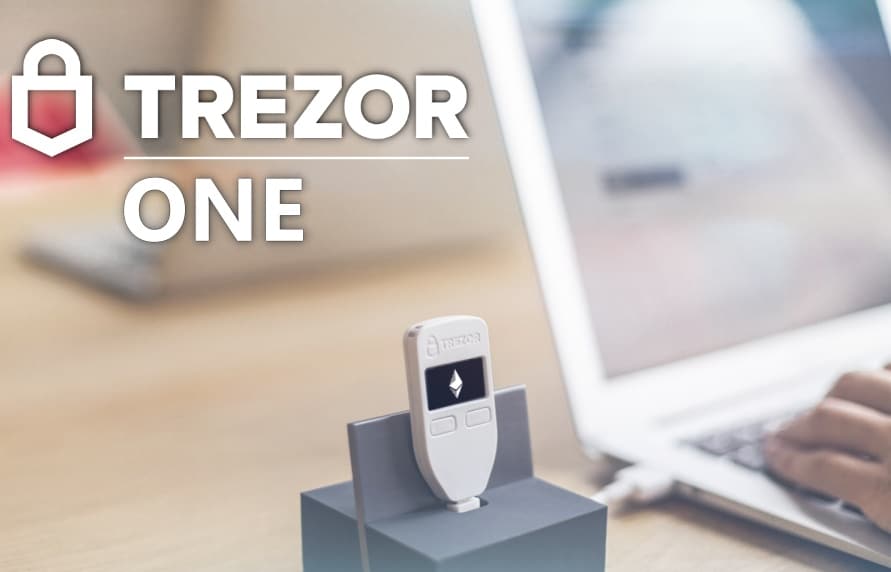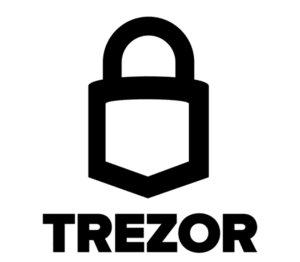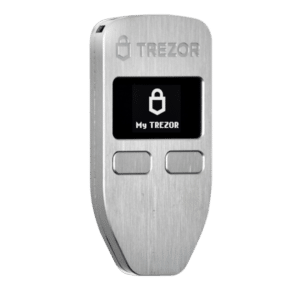
Trezor Wallet Review | Features, Security, Pros And Cons In 2019
20 Oct 2019

Today, we will review Trezor Wallet One and what features this hardware wallet has to offer.
Trezor Wallet Review: Overview
 Trezor is the very first crypto hardware wallet that was ever created. The wallet was launched in 2014 by Satoshi Labs, a Czech-based firm that has produced many innovations in terms of crypto products.
Trezor is the very first crypto hardware wallet that was ever created. The wallet was launched in 2014 by Satoshi Labs, a Czech-based firm that has produced many innovations in terms of crypto products.
Satoshi Labs also established a bitcoin mining pool called Slush, after the CEO’s nickname, as well as Coinmap, a digitized map that shows which places accept Bitcoin payments.
The company’s two wallet models, Trezor One and Trezor Model T, are compact pieces of hardware that support a wide variety of crypto, keeping them safe offline.
In today’s Trezor review, we will look into the features of Model One or T-One Model, as known by many others.
Supported Currencies and Available Countries
Trezor One allows users to store over 1000 coins and almost all ERC-20 tokens, including Bitcoin, Bitcoin Cash, Ethereum, Litecoin, ZCash, and many others. EOS, Ripple, Cardano, and Monero are not supported on Model One, but are available for Trezor Model T. NEO is not supported on both models.
Trezor One can be purchased by individuals from all countries, as long as they purchase the wallet from Trezor’s official site or approved third-party sellers. You can check out the list of approved resellers on their website.
Trezor Wallet Compatibilities
The wallet can be used with Windows, Mac OS, Linux, Android, iOS, as well as through Chrome and Firefox browser extensions. Trezor’s wallet interface can be downloaded for desktop and mobile devices at wallet.trezor.io.
User Interface and Experience
The interface has been updated several times to make the wallet as user-friendly as possible. The design is clean and bright, allowing users to easily find and manage their cryptos.
Its exterior has a small and compact design, with Trezor being around the size of a car-key, which you connect to your PC via a USB cable.
The casing comes either in white, black, or metallic, with the last one being pricier as it is not made out of plastic like the first two, but out of anodized aluminum. The device has a bright OLED screen of 128×64 pixels, which can feature up to six lines of text and display all the details needed to verify a transaction. There are also two buttons that help you navigate through the wallet’s interface.
How to Get Trezor Wallet
- Go to trezor.io/start in your web browser and select Trezor One;
- Install Trezor Bridge on your PC.;
- Refresh the page;
- After reloading, plug your device into your PC using the USB cable you receive from your package.
- Click “Install firmware;”
- After installation, the device will restart and then start initialization. Unplug and re-plug the device and refresh the site;
- Click on “Create new” on the welcome page to create a new wallet;
- Click “Create a backup in three minutes” to backup your 24-word recovery phrase;
- Write down the words correctly, pressing the button on the device to move to the next ones. You can write the words on the provided recovery cards;
- Give your Trezor a name;
- Set a PIN code to lock your device.
If you reached this part of our review, you should now have a functioning Trezor wallet.
How to Use Trezor Wallet
 Adding cryptocurrencies to Trezor Wallet
Adding cryptocurrencies to Trezor Wallet
- Choose which crypto you want to add to your wallet;
- Click the “Receive” tab;
- Click “Show full address” to view your device’s wallet address;
- Copy this address to send your funds from another wallet or exchange account.
Making payments on Trezor wallet
- Select the one you want to send;
- Click on the “Send” tab;
- Enter the destination address and how much you want to send;
- Confirm transaction details and click “Send”;
Receiving crypto on Trezor wallet
- Click on the “Receive” tab;
- Copy your Trezor wallet address;
- Share the address with the one who wants to make the payment/send crypto;
- Wait for funds to be credited to your wallet.
Built-in exchange
Trezor One also features a built-in exchange feature, which is supported through its collaboration with Changelly and ShapeShift. This enables wallet owners to make trades among cryptos directly from Trezor by using the site of the wallet.
In order to perform a trade, you will have to:
- Access the Trezor Wallet site;
- Choose what cryptocurrency you want to sell by going to the top left corner of the page;
- Select your account with the funds and the coin you are interested in buying;
- Select in which account you want the funds to be credited;
- Confirm transaction details;
- Click “Continue to exchange” and confirm the transfer on your Trezor device;
- Select an exchange (Changelly or ShapeShift) and provide the rest of the details, then confirm the transaction;
- Confirm the exchange on your Trezor hardware wallet to allow the trade to continue.
Trezor Wallet Fees
 The Trezor wallet does not charge any fees when you use the device aside from the money required to buy the actual product and network transaction fees that are charged when making trades. It is sold at around $50-$60 depending on shipping taxes or resellers.
The Trezor wallet does not charge any fees when you use the device aside from the money required to buy the actual product and network transaction fees that are charged when making trades. It is sold at around $50-$60 depending on shipping taxes or resellers.
Payment Methods
Trezor can be purchased via credit card or even with Bitcoin.
Transaction Times
All crypto transfers are executed almost instantly, as well as the trades performed via the exchange service.
Security Features
 As we have mentioned in any review concerning crypto wallets, security is paramount, and Trezor Wallet delivers top-tier security for crypto funds. Trezor’s source code is open-source, meaning that everyone can inspect it and audit it.
As we have mentioned in any review concerning crypto wallets, security is paramount, and Trezor Wallet delivers top-tier security for crypto funds. Trezor’s source code is open-source, meaning that everyone can inspect it and audit it.
The most important feature of the wallet is that it keeps funds in cold storage, cutting links to any internet connection.
When you set up your wallet, the device will generate a 24-Word Recovery Phrase that allows you to restore the wallet in should you lose or break your device.
The seed can also be used on other wallets to recover your funds if the Trezor ceases to be functional as a company. You are also able to add another word to your recovery phrase to enhance your wallet security so that when someone gets a hold of your wallet and recovery phrase, he cannot access it without the 25th word.
The device prevents unauthorized access through a PIN code, which has a clever setup process that combines using the device screen and your computer screen so your PIN stays hidden. The numeric pad featured on your computer screen shows question marks, which will require you to check your device for number positions. The numbers displayed on the device screen are mixed-up. You will have to enter the PIN twice to access the device, with the order of numbers changing between entries.
The wallet does not have a pre-installed firmware, allowing you to install the latest version of the interface. Trezor is so secure that it can even be used on computers that are already infected with malware.
 Customer Support
Customer Support
Trezor owners are able to find out questions to most common problems or queries by accessing the site’s FAQs section. The Trezor Support Centre also features an active Facebook page in which the customer support team offers quick responses to their clients.
Trezor Wallet Reputation
Trezor is regarded as being one of the most secure hardware wallets on the market, and the company behind it is revered as a trusted business in the crypto industry.
Trezor Wallet: Verdict
Trezor One is a compact wallet that allows you to store and trade your crypto securely in one place. We hope that our Trezor review has provided you with the information you were interested in finding out about the wallet.
The Review
Trezor Wallet Review
Trezor is one of the best hardware options to keep your cryptocurrencies safe. The wallet has a compact size and can be purchased at affordable prices. However, users need to be aware of the fact that it has a plastic casing and does not support several popular cryptos, such as NEO, EOS, XRP, ADA, and XMR.
PROS
- Affordable price
- 100% cold storage
- Transaction confirmation can only be done through device buttons
- Compact size
- Supports a wide range of cryptocurrencies and tokens
- Can be used even on malware-infected PC
CONS
- Not hierarchical deterministic
- Plastic casing
- Does not support several popular cryptos, such as NEO, EOS, XRP, ADA, and XMR.
Review Breakdown
- Supported Currencies
- Pricing and Fees
- Security
- Transaction Speed
- Ease of Use
- Compatibility
- Customer Support
Related News
Sec Official Ether Is Not A Security
- 20 Sep 2023
Sec Official Ether Is Not A Security
- 20 Sep 2023
Sec Official Ether Is Not A Security
- 19 Sep 2023
Sec Official Ether Is Not A Security
- 17 Sep 2023
Sec Official Ether Is Not A Security
- 15 Sep 2023
Sec Official Ether Is Not A Security
- 14 Sep 2023
Sec Official Ether Is Not A Security
- 14 Sep 2023
© CoinJoker 2019 | All Rights Reserved.











